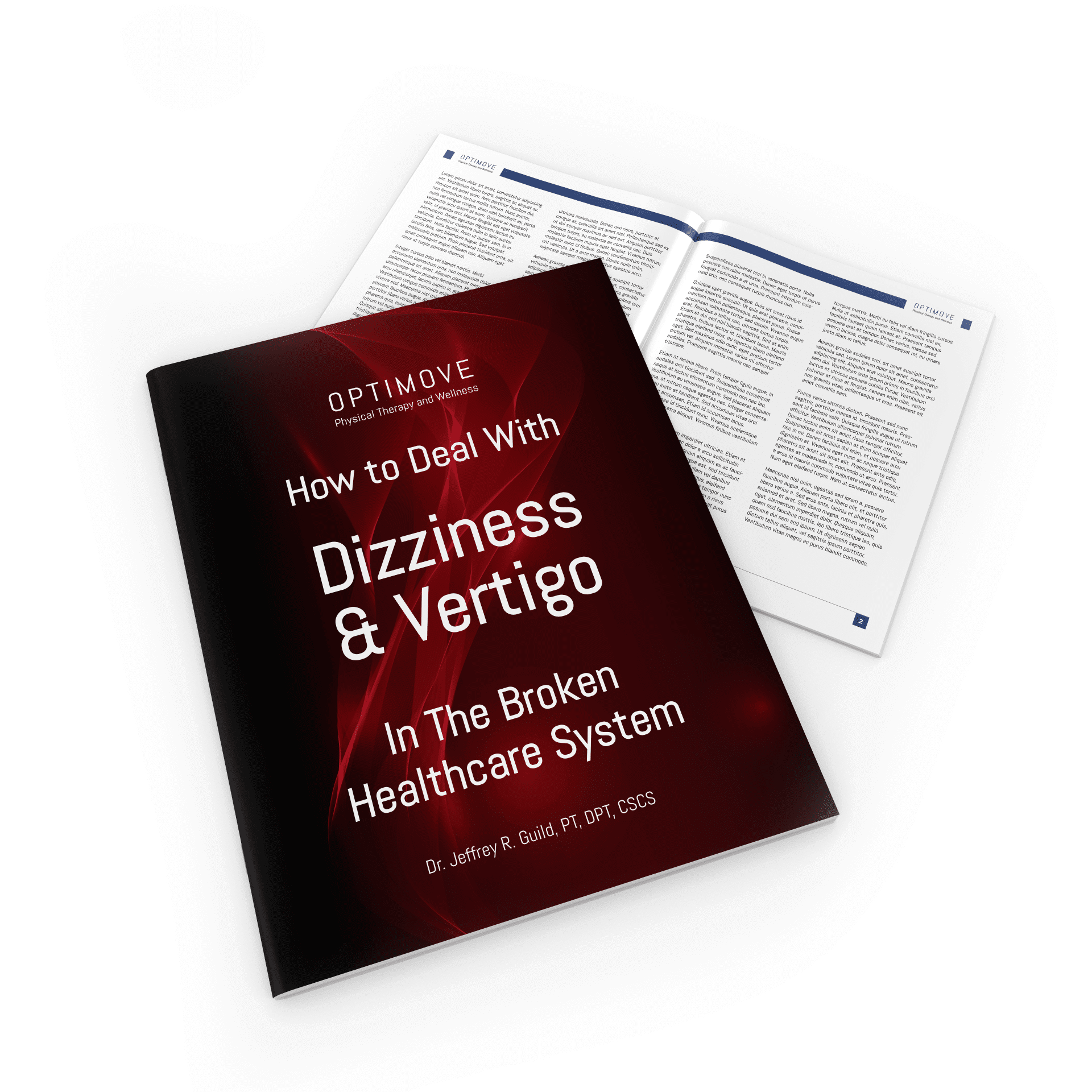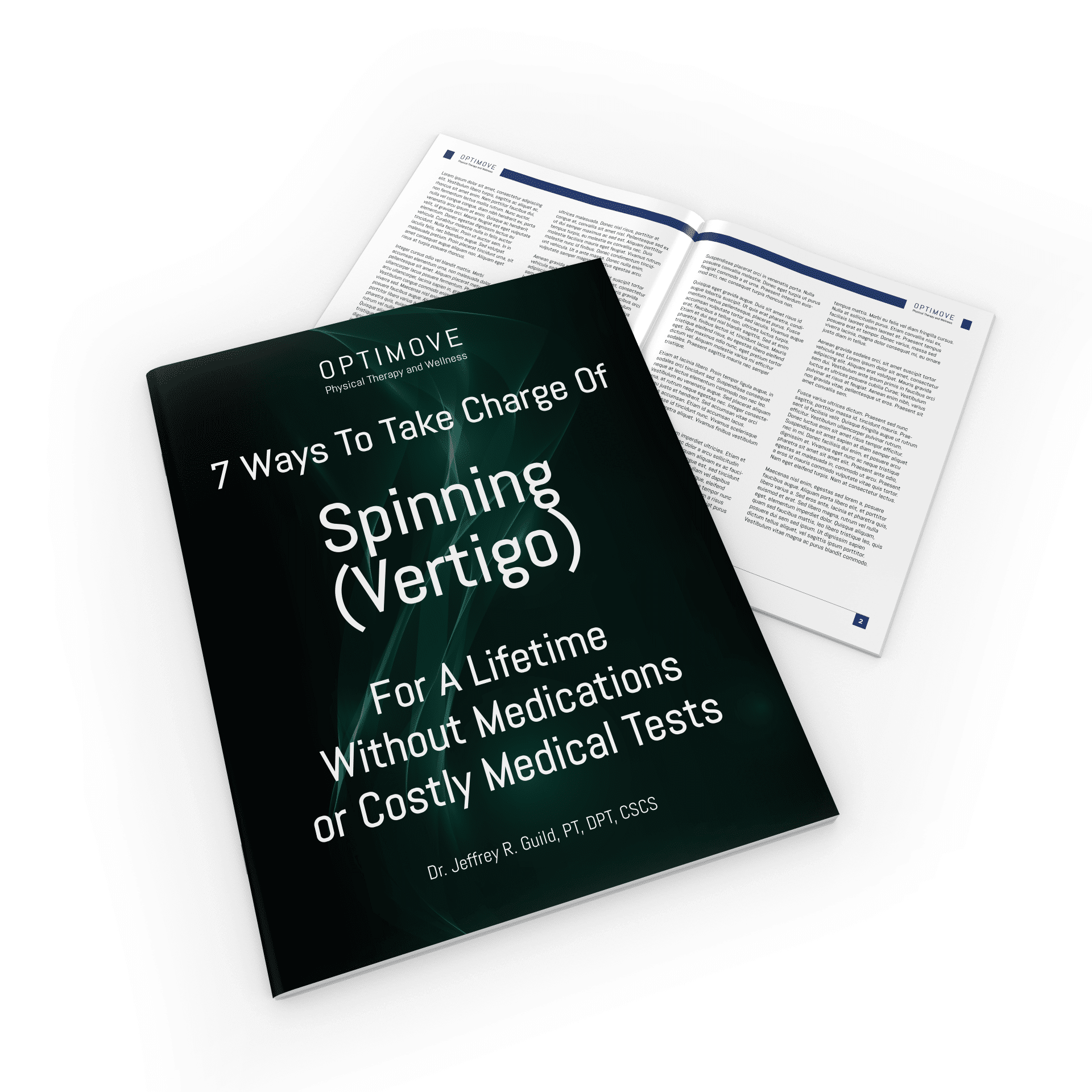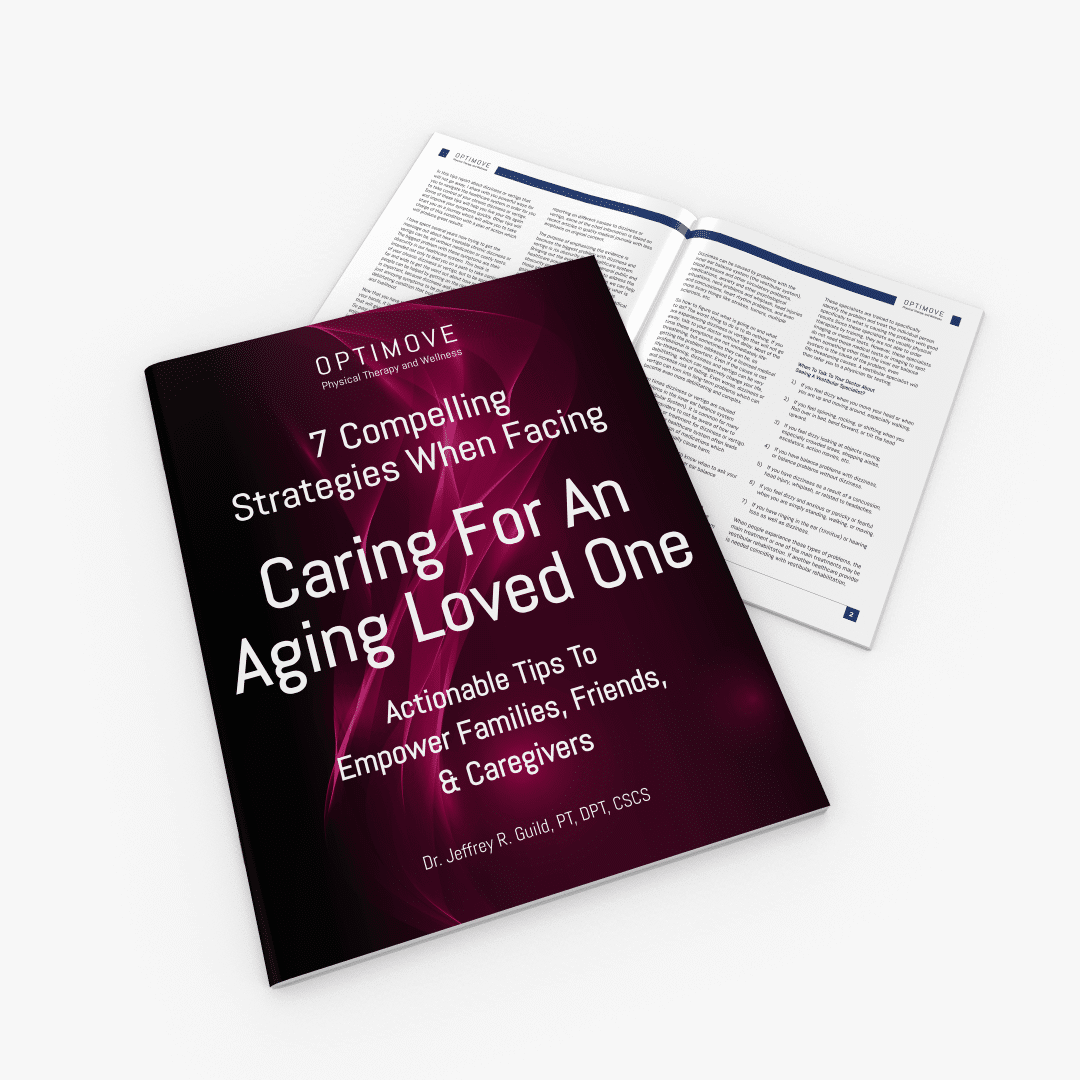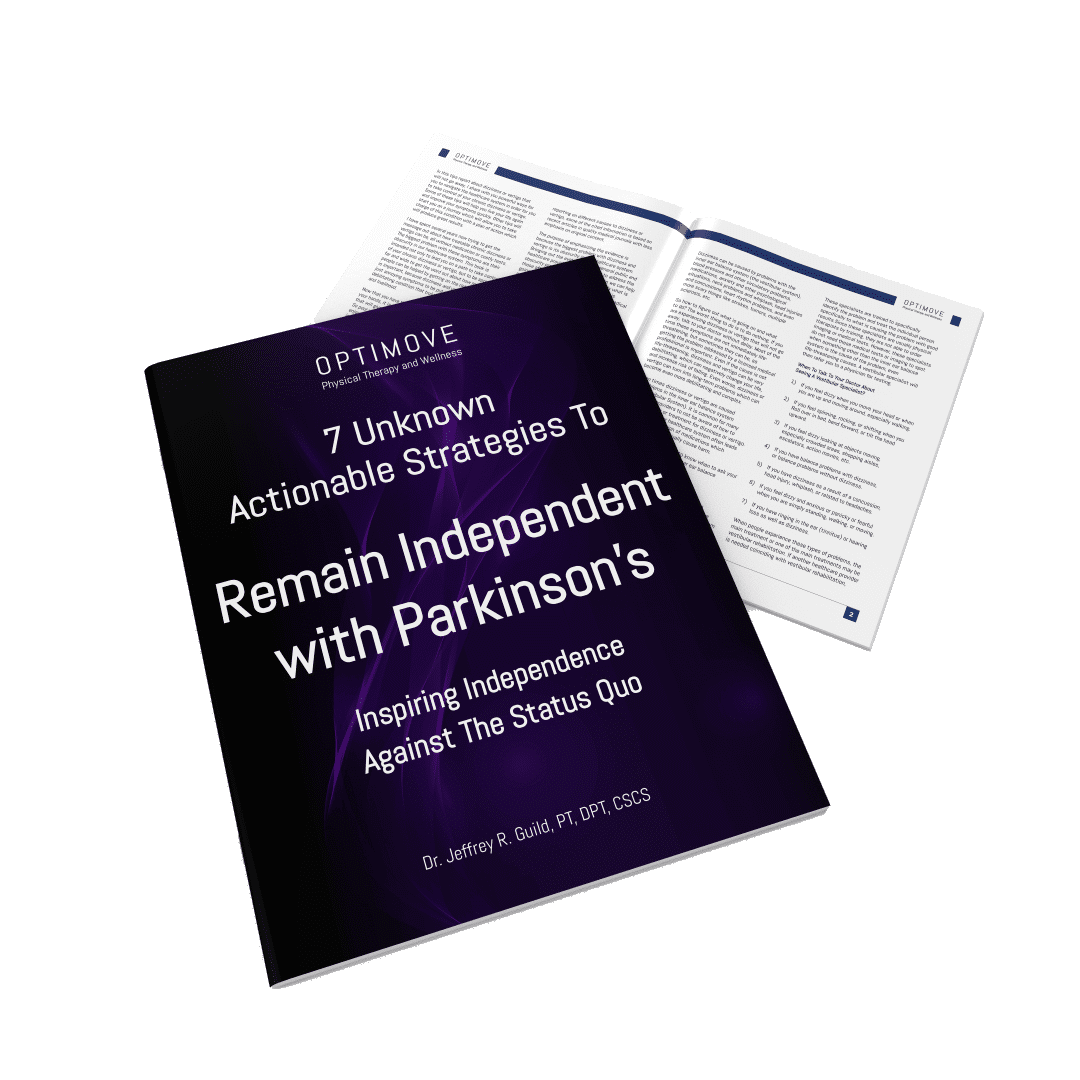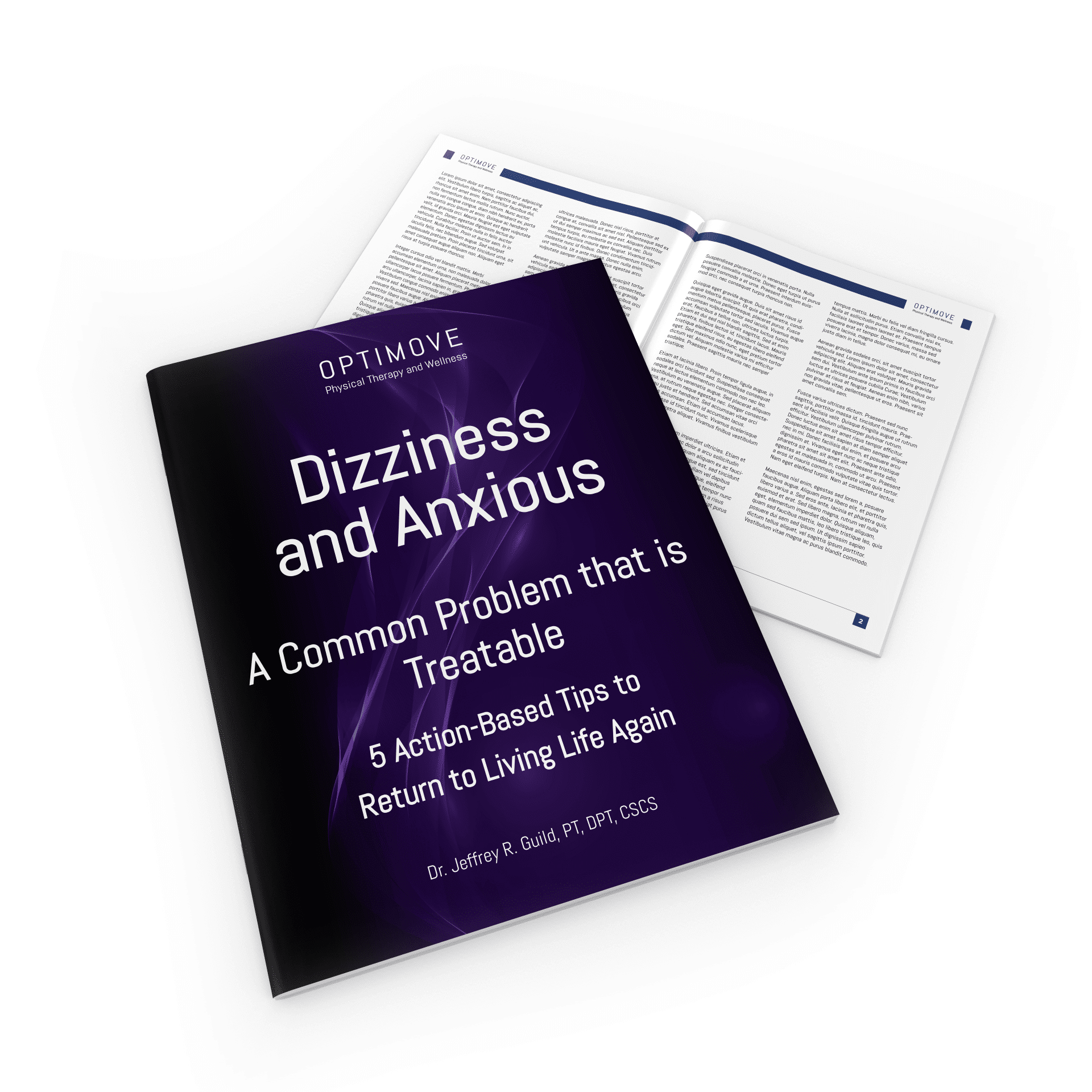Dr. Jeffrey Guild delves into the topic of balance training and treatment for balance disorders. He highlights the difference between generalized balance training and individualized treatment, stating that the latter requires specialized vestibular or neurological specialists.
He emphasizes the complexity of the balance system and the need to identify the root cause of the problem for effective treatment. Dr. Guild challenges the current healthcare system and societal norms that only provide a limited amount of time for individuals with complex balance problems.
Do you or an aging loved one struggle with balance and falls? There is hope. Let us empower you to maintain your independence at home and in the community.
Click the link below to book your free in-home discover visit: https://old.optimovedfw.com/balanceandfallsfb
Speaker 0 (00:00:00) – So I want to talk today about generalized balance training. And I like to talk about this because it’s important to distinguish between the two, between very specific individualized training that’s geared towards the individual person finding the root cause of the balance or business or vertigo problem versus generalized balance training. Just basically this is kind of the one size fits all basic group of things that we tend to just kind of give everybody. And this is kind of balance treatment. And you may have experienced this if you’re an older person or if you take care of an older person and you’ve gone to physical therapy before for these sorts of problems, either because of a fall or a concern about someone’s balance or a decline with an older person. If you are that person or if you’re taking care of that person, you go to physical therapy and you get kind of this run AMI just kind of generalized balance training and you get somewhat better and the person gets somewhat better, they get stronger, but there’s not a full resolution to the problem.
Speaker 0 (00:01:01) – And this is quite common throughout physical therapy. Now part of the explanation is the difference between a someone who is very specialized in bowel and falls and vestibular disorders, basically distance and vertigo disorders and someone who might be specialized in more orthopedics or even just a generalized, you know, physical therapist who just worked with a lot of different things. So when you see more of a general physical therapist or you see someone who’s not necessarily specialized in vestibular disorders or neurological disorders or balance in general, then you’ll tend to get more of a general balance training solution. And that’s tend to be where you’ll see that. Whereas where you’ll tend to see more individualized, very specialized form of treatment for balance disorders would be with of course a vestibular specialist, someone who’s a very good vestibular specialist who’s gotten coaching and mentoring and has treated it uh, thousands and thousands of times, not just gone to a weekend course or even a week long course.
Speaker 0 (00:02:00) – Um, and there’s some very good courses that are like that, but it’s the coaching and mentoring on top of those courses. That’s the real value and not everybody is able to get lucky and get that type of experience. And that’s a whole nother story why that is so difficult to find and that’s a whole nother ball game. Now, back to why a specialist is so important. Now you might have a vestibular specialist who you can go to, but there’s also, you know, neurological specialists and these are people who are, they may not be vestibular specialist, but they’re often very specialized in working with balanced disorders in general as well. So you might go to a neurological physical therapist and who, this is someone who works with strokes, Parkinson’s, multiple sclerosis and geriatrics in general. And so they’re quite good at working with disorders. And again, you might find that person is able to provide very good individualized, uh, treatment and solutions.
Speaker 0 (00:02:55) – So what’s the difference between the two, generalized balanced training versus very individualized solutions and individualized treatment? So our balance system is quite complex and it’s something that we take for granted. It’s our ability to be able to do multiple things at one time while moving our head, while walking a straight line and to be able to have a conversation and to be able to avoid dangers around us such as cars, potholes and curves and everything else and without having to even think about what’s around us. And that ability is something that we take for granted. It’s not quite innate from the standpoint that we have to develop it in childhood. This is often comes in the form of play when we are spinning around and we roll down hills with friends and we go to amusement park rides and we ask our parents to spin us around.
Speaker 0 (00:03:44) – We are developing our balance system overall, very specifically our vestibular system and how our vestibular system basically coordinates with the rest of our body so that when we become, you know, functional adults, we’re able to do these things just automatically we’re able to just walk a straight line and move our head, look for danger and be able to do multiple things at one time, have a conversation, think about something else, all without having to worry about our balance. And this should happen just kind of automatically. And it’s something that we often take for granted as adults at this point. But what happens when a wrench gets thrown into that system or what happens when that system becomes weak? And we often find out that that can happen. It can happen with younger individuals, it can happen with older individuals. Oftentimes when we see younger individuals, they’ll often come to us with a very specific vestibular disorder or very specific balance disorder or neurological disorder or if they didn’t develop, you know, in childhood for some reason.
Speaker 0 (00:04:44) – Whereas with older individuals it might be a very specific diagnosis or neurological disorder or vestibular disorder, but we’ll tend to see a lot more also just kind of weakness of the vestibular system, kind of general decline of the vestibular system due to mostly lack of use. Yes, there’s some physiological anatomical changes that occur as people get older, uh, but a lot of the decline is very much due to the fact that people don’t use their balance system as much as they get older and they are farther away from childhood when in the form of play they were spinning around and very much actively stimulating their balance system and they could do quite a bit of things without getting dizzy or enjoying the dizziness as well. So what someone needs when they have a balance problem is specific individualized treatment. Why The balance system is very complex.
Speaker 0 (00:05:37) – It’s kind of a whole group of systems. So you have your vestibular system, your main central balance system. It’s a neurological system. It’s not an inner ear system, although one of the main kind of organs for the vestibular system is in the deep inner ear. But that is just one part of it. The rest of the vestibular system is basically throughout the central nervous system. It goes to the brainstem, the cerebellum, and throughout parts of the cortex and then all the way down the spinal cord and back up. And there’s really stations basically, um, in the brainstem and of course, uh, important uh, feedback from the cerebellum and the cortex as well. And all this goes together to allow us to balance, but we also have to get what we call sensory information from our legs. So what’s a sensory information? It’s what we call appropriate deception.
Speaker 0 (00:06:26) – Big fancy word for basically you have joint receptors in all of your joints that tell your brain about where they are in space. So you can basically close your eyes and move your arm and be able to t try to touch your nose and you don’t actually touch your nose or if you choose not to, you don’t have to. There’s of course the cerebellum which allows the smoothness of the movement, but you also have appropriate deception which allows you to just automatically know where your joints are in space without actually hitting your finger to your nose if that’s what you’re choosing to do. And so this is a very specialized, uh, sensory mechanism and that information goes up to our brain. Now of course we have these receptors in the joints of our legs and those receptors in the joints of our legs basically tell our brain about where we are in space and that allows our legs to just automatically know where they are.
Speaker 0 (00:07:19) – You can think of an athlete, um, let’s say a, um, a wide receiver and they’re, you know, running to catch a ball and you know, the legs are flopping all over the place going, you know, going over and the cross and um, they’re, the legs are all over the place and the wide receiver is focusing on catching the ball. They don’t have to think about where their legs are and that’s the appropriate reception at work. We don’t have to think about where our legs are in space because our joint receptors through our central nervous system basically take care of all that. For us, it is automatic, we don’t have to think about it. So very basic real life things. If you’re not a wide receiver, it’s the going up on stepping up on curbs and stepping down curbs. It’s going up slopes, it’s climbing stairs, it’s being able to run up and down stairs and you don’t have to really think about where your feet are at.
Speaker 0 (00:08:08) – Um, to a point you might, uh, depend on level of, of athleticism and coordination. But for very basic things, as adults we generally don’t have to think about things such as going up and down curbs and slopes and stairs. Now if our foot catches, then our body tends to automatically respond and then there’s appropriate reception again, our foot knows where to go in order to catch ourselves. So this is the absolute brilliance and wonder of our balance system at work. So our proprioception goes up to our brain and so we’re able to know where our legs are in space. And on top of that course we have our vision, which also helps us out. So we have multiple ways in which we balance. So the therapist has several tools at their disposal to give us some sort of balance training. And oftentimes this is the level of execution of generalized balance training.
Speaker 0 (00:08:57) – What you’ll find is, of course, standing eyes open and eyes closed, maybe standing on foam, um, you know, maybe know walking a straight line and you know, all sorts of various things. And of course standing on one leg, that’s something that you’ll often see uh, with generalized balance training. That’s another thing that will a lot of time will be dedicated toward that may not be needed compared to other things. Cuz if you think about it, if someone’s over the age of 70 or 80 years old, how long do they need to be able to stand on a single leg for real life daily tasks? And yes, if you’re a young person, if you’re an elite athlete, then you might want to be able to stand on your, your leg on one leg for, you know, indefinitely would be very valuable. And if you can’t, there might be another problem.
Speaker 0 (00:09:43) – But for someone who’s over 70 or 80 years old, yes it might be valuable to stand on one leg. However, the amount of time dedicated towards that towards more important things is often over-emphasized with generalized balance training. So you might ask what’s more important if it’s not standing with eyes open and eyes closed and standing on one leg, then what is more important? What is more important is basically our ability to be able to move our head in space while we are standing up to be able to move our head and walk at the same time. The ability to be able to have a conversation while also walking at the same time. So these are all more complex things that oftentimes generalized balance training is often missed and they might do a little bit of that. There might be some of that that’s done in walking with head turns and such.
Speaker 0 (00:10:31) – But also what’s the buildup to that? What is the progression towards that and how well can the person do that if they already have a major balance problem? Because oftentimes walking and move in one’s head can be quite a difficult task to do and very high level. So there has to be a progression towards that type of balance. So what is more important is the ability to stand and be able to move one’s head and not only be able to move one’s head, but also to be able to move one’s head fast. Because what we often don’t realize is the speed of life often requires us to move our head much faster than we usually think of. People often don’t realize how much we have to move our head and also the speed at which we need to move our head. And you’ll often find that if you’re taking care of an aging loved one or if you look at your peers around near, if, if you’re a little bit older that people will tend to move with their head and body just kind of together, they may not move their head as much by itself.
Speaker 0 (00:11:33) – And this feeds into that, that vestibular weakness that we were talking about before where there’s less head movement and especially less head movement in relation to the body. And so that vestibular system then declines as a result of weakness. Now other things can cause this, uh, such as neck problems, orthopedic problems, back problems can also limit someone’s, uh, head from moving often simply because they’re neck hurts. And so what can happen is you have an orthopedic problem, say from a neck injury or just neck pain in general, and then that feeds into the balance problem or vestibular problem or a chicken or egg problem where you have what came first, did the neck problem come first or did the vestibular problem come first? So sometimes we don’t even know because both have been going on for so long. So someone can get a neck injury and then they don’t move their head and since they don’t move their head, then their balance system declines and they can even end up with dizziness simply because they’re not moving their head for a long period of time.
Speaker 0 (00:12:31) – Or it can go the reverse route where they are having a balance problem or a vestibular problem, they’re getting dizziness for some reason and they stop moving their head and then their neck muscles tighten up and then they start having neck pain. And if these two things have gone on long enough, sometimes it can be difficult to figure out what came first. And so sometimes we have to, we try to tease that out, sometimes it doesn’t really matter. We basically find a solution by addressing both. And that goes back to the individualized solution part of all this. So finding the root cause of the problem is very, very important with balanced disorders back to generalized balance training, it might be just kind of generally giving somebody the same type of exercises, standing eyes open, eyes closed, standing on one leg and walking while turning one’s head and some things like this, but it doesn’t, it may or may not figure out what is actually causing the balance problem.
Speaker 0 (00:13:26) – So do they have a balance problem because they actually have complete appropriate deceptive loss. They, their legs are not telling the brain about where their legs are in space. And if that is a problem, then that’s very different from someone who has a weak vestibular system. But the proprioception is perfectly intact, the outcome for that person with certain tasks is going to be very different because that proprioception, you’re not gonna be able to get back if it’s actually completely gone. And so you’d have to compensate for that by strengthening their vestibular system. You have to improve their confidence, you have to improve their walking, you have to compensate for that appropriate deceptive loss. And so again, the outcome with certain tasks, especially going up and down stairs with or without a railing can be very different if the person has a very severe or complete appropriate deceptive loss.
Speaker 0 (00:14:16) – Other potential causes of balanced problems can be more orthopedic or muscular in nature. So hip weakness, so our side rear end muscles not being strong enough, this is a very common problem in the population as a whole and especially common with the older population. Why? Because they’ve been living longer. And how often do we move side to side in our daily lives? Unless if we’re rollerblading or you know, going to CrossFit and doing band walks or something, you know, how often do we actually activate our side rear end muscles and move side to side? And if we’re not doing those sorts of things, then those muscles tend to get weaker and decline as we get older. And these muscles can get weak, especially relative to the level of performance that we’re trying to do. So it’s not uncommon at all for elite athletes to take a 16 year old kid who’s uh, playing very advanced sports in high school.
Speaker 0 (00:15:08) – If they’re not strengthening their side rear end muscles enough, they can end up with knee and hip and back problems as a result. And those are actually quite common injuries and the side rear end muscles getting weak, the GL media scope minimus getting weak is a very common cause of those sorts of injuries or a contribution to the cause of those sorts of injuries. So back to the older population, also side rear end weakness. GEDs minimus weakness is a common problem with the older population as well. Again, probably because they’ve been living longer and so they’ve had a longer period of time for those muscles to get weak over time, especially because we don’t tend to use those muscles much in daily life. So why are those muscles important? Basically those muscles help stabilize our pelvis when we’re walking. Now back to the single leg part, right?
Speaker 0 (00:15:56) – So standing on a single leg is important for older individuals as well. People where age of 70, 80, 90, yes, uh, staying on a single leg is important I would say, but only up until a couple seconds because they need to be able to step over an object, they need to be able to take a long confident stride as they’re walking. And so they need to be able to stand on a single leg for a short period of time and do that successfully on a regular basis. And of course the side rear and muscles, the glu glu muscles are a big part of being able to make that happen because those muscles allow the pelvis to stay level. And of course there is tightnesses and other weaknesses that can occur that can also contribute to this problem. And so you have a whole host of musculoskeletal causes that can add to or be the main cause of a balance problem.
Speaker 0 (00:16:47) – Along those lines, you can have, uh, what we call plantar ction weakness or basically weakness in the calf muscles that prevent the person from pushing their toes down. Now if you can imagine, try walk if, if you’re have a balance problem already, don’t try this. But if you try to walk across the room or if you try to balance yourself without pushing your toes into the ground at all and basically see how difficult it is to balance yourself overall, you’re gonna find that it’s quite difficult to balance yourself if you can’t push your toes into the ground. And again, the treatment for this sort of problem is gonna be very different compared to someone who doesn’t have this problem. Because a lot of times people will fall backwards when they’re older and that’s the most common place to fall. They’ll fall backwards. Now if someone has a plantar fle to weakness problem, their biggest threat is actually falling forward because they’re not able to push their toes down and prevent themselves from going forward. Whereas if they don’t have a plant inflection problem, they can push their toes down just fine, they tend to fall backwards. And so these are the different dynamics that
Speaker 1 (00:17:50) – Tend to happen with people when they have a balance problem.
Speaker 0 (00:17:53) – So generalized balance training,
Speaker 1 (00:17:55) – If it’s not addressing the root cause of the balance problem, then that can
Speaker 0 (00:17:59) – Lead to a situation where someone is able to get some better. As often our clients
Speaker 1 (00:18:04) – Will say they’ll get some better, but they’re not gonna find as much
Speaker 0 (00:18:08) – Potential as it would compared. If we figure
Speaker 1 (00:18:11) – Out, okay, what’s exactly going on? Why does the person exactly have a balance problem? All these things need to be taken into consideration. And so the treatment can be very different based on the individual causes of the problem and also the progression that you will do the safety with. Progression will also be a big factor as well. You might give
Speaker 0 (00:18:32) – Them exercises if they have a particular problem and is completely safe and fine, but if
Speaker 1 (00:18:37) – There’s something else that’s causing the balance problem, you wouldn’t want to have them do those exercises
Speaker 0 (00:18:42) – On their own. You want to progress them in a different way in order to make sure that
Speaker 1 (00:18:45) – They’re safe. You can see here, given all these variables, why
Speaker 0 (00:18:49) – Generalized balance training gets
Speaker 1 (00:18:51) – People some better but isn’t gonna get them to their full
Speaker 0 (00:18:55) – Potential. And
Speaker 1 (00:18:56) – Very
Speaker 0 (00:18:57) – Specific individualized
Speaker 1 (00:18:58) – Treatment can help people get to a full
Speaker 0 (00:19:00) – Resolution of the balance problem. It’s amazing the things
Speaker 1 (00:19:04) – That can happen.
Speaker 0 (00:19:04) – Basically once you get after it, you find out the root cause
Speaker 1 (00:19:08) – And then you keep
Speaker 0 (00:19:09) – Pursuing it, you don’t stop, you don’t give up,
Speaker 1 (00:19:11) – You keep helping them get better and better and better over time because this can
Speaker 0 (00:19:15) – Take time, especially
Speaker 1 (00:19:16) – With older individuals. There could be a lot
Speaker 0 (00:19:18) – Of history there. There can be a
Speaker 1 (00:19:19) – Lot of causes
Speaker 0 (00:19:20) – To the balance problem.
Speaker 1 (00:19:21) – It could be a brain injury, it can be a
Speaker 0 (00:19:24) – Hospitalization, it can
Speaker 1 (00:19:25) – Be a very complex medical situation. All these things feed into one another and they cause this type of complexity and just means it might take a little bit longer, but it doesn’t have to take long.
Speaker 0 (00:19:37) – And just because it takes
Speaker 1 (00:19:39) – A long time doesn’t mean it’s not worth pursuing
Speaker 0 (00:19:41) – Because if you think about let’s say your children and grandchildren,
Speaker 1 (00:19:45) – How much would you pursue to get them as good as they can be?
Speaker 0 (00:19:49) – If they’re struggling with something as basic as balance or
Speaker 1 (00:19:53) – If it’s reading or anything basic in their daily life, how much do we pursue with our children? And so how much should we pursue with our older population as well? Why just give them six weeks? Why give up on them like that and why make
Speaker 0 (00:20:08) – That the norm? And the challenge has been in our current healthcare system, in our current society, that
Speaker 1 (00:20:13) – Has become the norm where
Speaker 0 (00:20:15) – Someone who has a very complex balance problem is
Speaker 1 (00:20:18) – Given let’s say only six or eight weeks or whatever it might be. But what’s
Speaker 0 (00:20:23) – Actually gonna solve
Speaker 1 (00:20:24) – The problem is gonna be a lot longer term than that. Even if it’s specific individualized solutions, it might take longer than that.
Speaker 0 (00:20:32) – Now again, it doesn’t always take longer than that. And the good news is the sooner that you start on these sorts of things, when you
Speaker 1 (00:20:38) – Start
Speaker 0 (00:20:39) – Noticing a balance problem or
Speaker 1 (00:20:40) – The first fall or before the falls result in a hospitalization and a hip fracture and all this declined,
Speaker 0 (00:20:47) – This vicious cycle that is a vicious downward spiral basically addressed the cause of the problem early on and the earlier that you addressed the problem, the quicker that the problem can be resolved. Hope this is helpful to distinguish between generalized balance training and very specific individualized treatment for balance disorders I think is very important, especially with the baby boomers getting older In the next several years we’re going to be experiencing a lot of people getting older and struggling with these sorts of problems. So it drives me to get ahead of this problem and to be able to prevent these problems from becoming basically a nationwide epidemic. So if you like information like this, subscribe to our channel and we’ll look forward to getting more information out.


